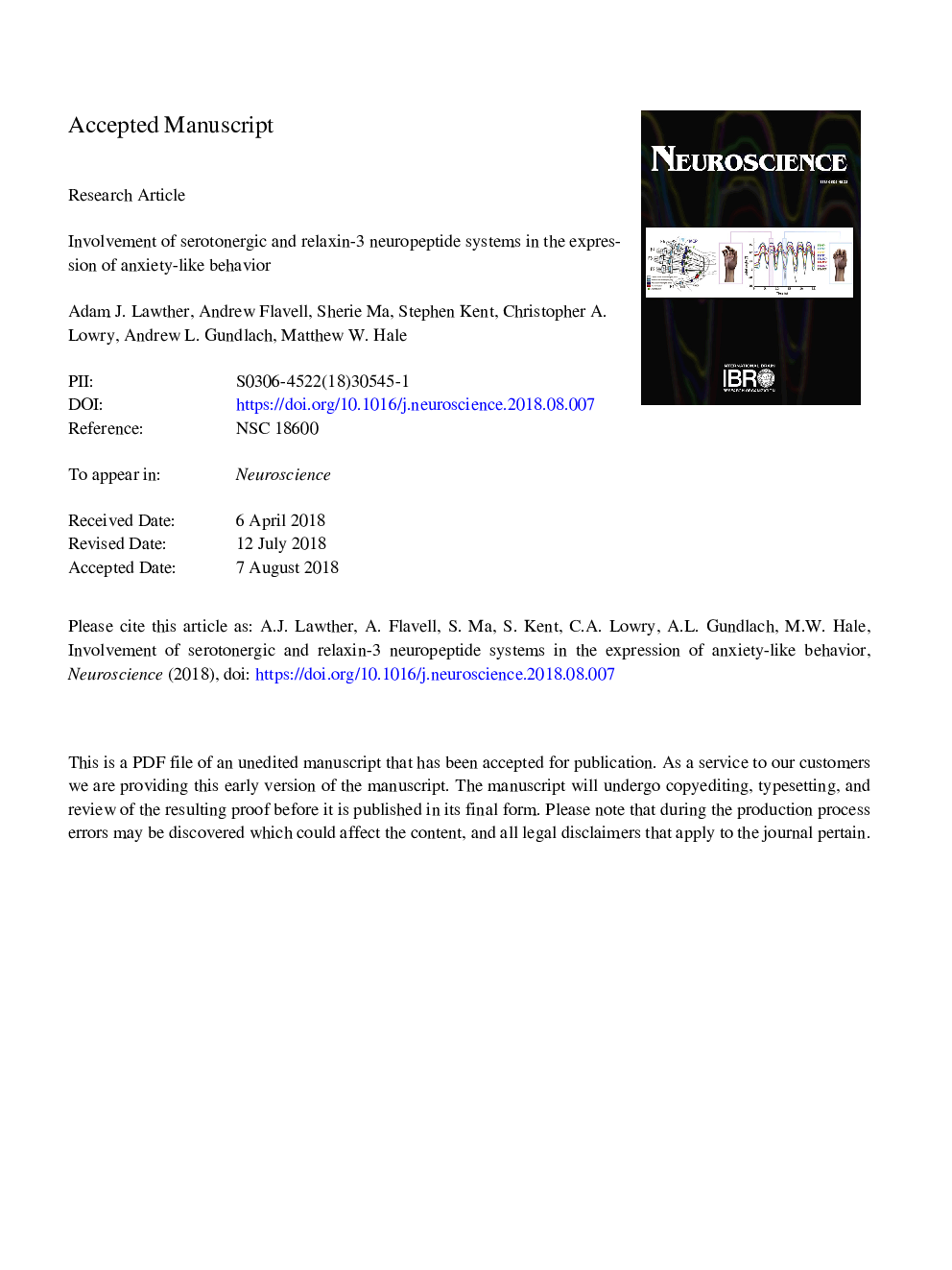| Article ID | Journal | Published Year | Pages | File Type |
|---|---|---|---|---|
| 10144107 | Neuroscience | 2018 | 42 Pages |
Abstract
Anxiety-related defensive behavior is controlled by a distributed network of brain regions and interconnected neural circuits. The dorsal raphe nucleus (DR), which contains the majority of forebrain-projecting serotonergic neurons, is a key brain region involved in fear states and anxiety-related behavior via modulation of this broad neural network. Evidence suggests that relaxin-3 neurons in the nucleus incertus (NI) may also interact with this network, however, the potential role of the NI in the control of anxiety-related defensive behavior requires further investigation. In this study, we examined the response of an anxiety-related neuronal network, including serotonergic neurons in the DR and relaxin-3-containing neurons in the NI, to administration of an anxiogenic drug and exposure to an aversive environment. We administered an anxiogenic dose of the adenosine receptor antagonist, caffeine (50â¯mg/kg, i.p.), or vehicle, to adult male Wistar rats and 30â¯min later exposed them to either an elevated plus-maze (EPM) or a home cage environment. Administration of caffeine and exposure to the EPM activated a broad network of brain regions involved in control of anxiety-like behaviors, including serotonergic neurons in the DR, as measured using c-Fos immunohistochemistry. However, only exposure to the EPM activated relaxin-3-containing neurons in the NI, and activation of these neurons was not correlated with changes in anxiety-like behavior. These data suggest activation of the NI relaxin-3 system is associated with expression of behavior in tests of anxiety, but may not be directly involved in the approach-avoidance conflict inherent in anxiety-related defensive behavior in rodents.
Keywords
intracerebroventricularRXFP3dorsal raphe nucleus, interfascicular partDRVdorsal raphe nucleus, ventral partDRVLDREADDPRLbasolateral amygdaloid nucleus, posterior partCg1PAMPLaDLi.c.v.LaVLlateral septal nucleus, ventral partRelaxin-3dorsal raphe nucleus, caudal partLHbMDRCPVPDRILSVSTMVBLAEPMCRFtph2PaVDRDBLPAnxietyimmunoreactiveSerotoninlateral septumcorticotropin-releasing factorinfralimbic cortexprelimbic cortexElevated plus-mazePalmNIDdorsal raphe nucleusdorsal raphe nucleus, dorsal partmedial septal nucleuscentral amygdaloid nucleusbasolateral amygdaloid nucleus, anterior partnucleus incertustryptophan hydroxylase 2NICCaffeinedesigner receptors exclusively activated by designer drugs
Related Topics
Life Sciences
Neuroscience
Neuroscience (General)
Authors
Adam J. Lawther, Andrew Flavell, Sherie Ma, Stephen Kent, Christopher A. Lowry, Andrew L. Gundlach, Matthew W. Hale,
